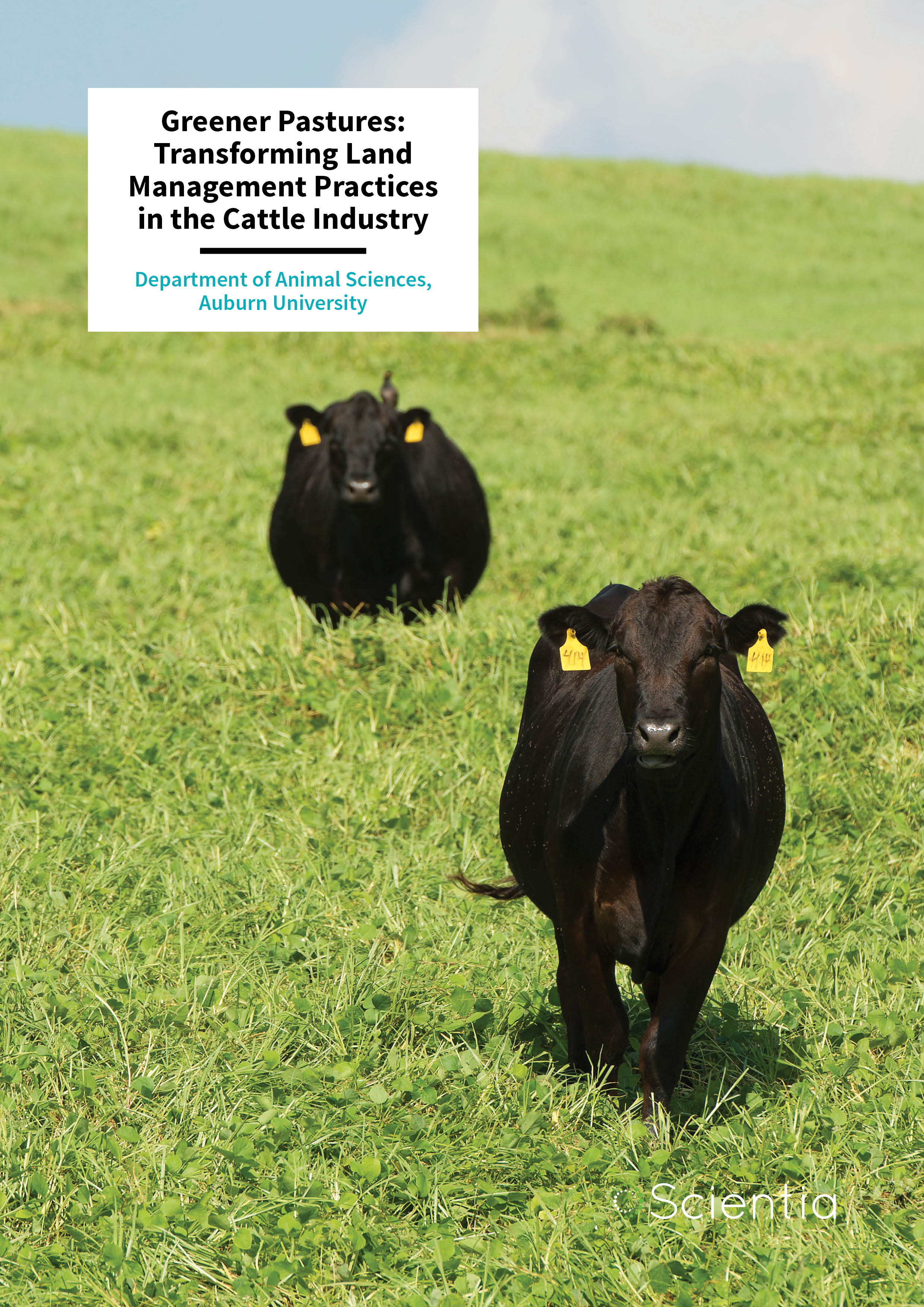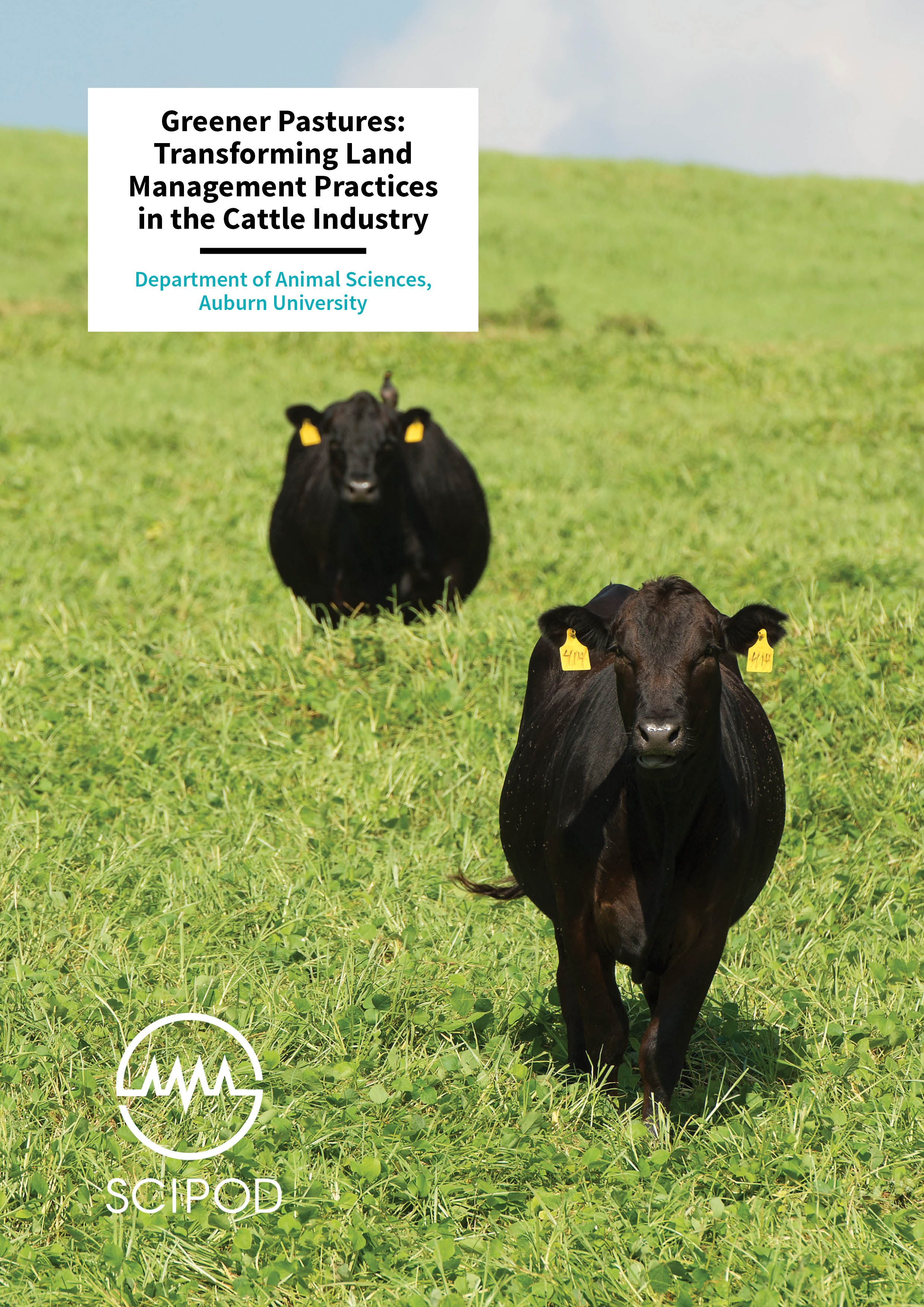Greener Pastures: Transforming Land Management Practices in the Cattle Industry
In the face of global climate change and challenges to sustainable use of renewable resources, farmers and ranchers are continually seeking best management practices that are economically viable and environmentally friendly. To meet this need, researchers at Auburn University are conducting innovative agricultural research directed at shaping sustainable cattle ranching practices and pasture management techniques.
In the Southeast United States, the State of Alabama runs on agriculture. With over four million acres of pasture-land, the state is poised for a booming cattle ranching economy. Faculty members Russ Muntifering, Leanne Dillard, Kim Mullenix and Courteney Holland in the Department of Animal Sciences at Auburn University are studying how the composition, biology, and management of forages in cattle pastures affect the nutrition and health of beef cattle and impact the local ecosystem. The research team’s work is shaping pasture management practices in Alabama, with implications for how grasslands for raising cattle can be sustainably managed worldwide.
Healthy Pastures in the Face of Climate Change
Understanding how climate change and pollution impact agricultural practices, particularly as they relate to forage for cattle and other livestock, is a key component of the research carried out by Dr Muntifering and his colleagues. Many estimates of plant growth under future climate scenarios focus on elevated carbon dioxide, which is typically reported to have a neutral or even positive impact. It is commonly held that elevated carbon dioxide increases plant yield and is protective against other environmental stressors.
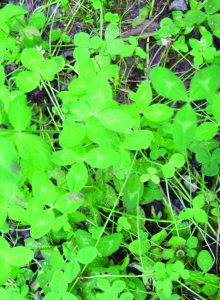 However, the increasing greenhouse gasses associated with global climate change also include ground-level ozone, a major component of urban smog that is extremely toxic to plants. ‘Once thought to be confined to large metropolitan locales, ground-level ozone is now known to be transported long distances to rural areas such that many of the world’s most productive agricultural and forested regions are currently exposed to harmful levels,’ Dr Muntifering explains.
However, the increasing greenhouse gasses associated with global climate change also include ground-level ozone, a major component of urban smog that is extremely toxic to plants. ‘Once thought to be confined to large metropolitan locales, ground-level ozone is now known to be transported long distances to rural areas such that many of the world’s most productive agricultural and forested regions are currently exposed to harmful levels,’ Dr Muntifering explains.
The team has spent years analysing the chemical composition and nutritive value of common forage plants under different carbon dioxide and ozone exposure conditions in controlled experiments as well as natural settings. They have found that grasses and legumes such as clovers exposed to injurious levels of elevated ozone have less biomass yield and digestible content than non-exposed plants, meaning that a cow would have access to less forage that is also of lesser quality in an ozone-polluted pasture than one with clean air. Furthermore, contrary to popular belief, the team discovered that heightened carbon dioxide levels do not protect these plants from ozone damage, nor do they offer any effects that compensate for the loss of nutritive value.
These findings have critical implications for the agriculture community worldwide, and have garnered international attention for the potential impacts they suggest. While many studies have focused on the overall yield of forage plants when assessing potential climate change related losses, the team has demonstrated that nutritional quality can be impacted independent of a plant’s overall yield. In the United States alone, these effects could cost billions in lost production and necessitate the development of more robust pasture management and grazing strategies.
‘These findings represent a significant departure from the conventional wisdom on elevated carbon dioxide effects on plants, and further illustrate the need for manipulative “real world” experiments in climate-change research that utilise environmentally relevant exposures of mixtures of common air pollutants, not simply individual pollutants as have been utilised traditionally in controlled-environment experiments,’ Dr Muntifering notes.
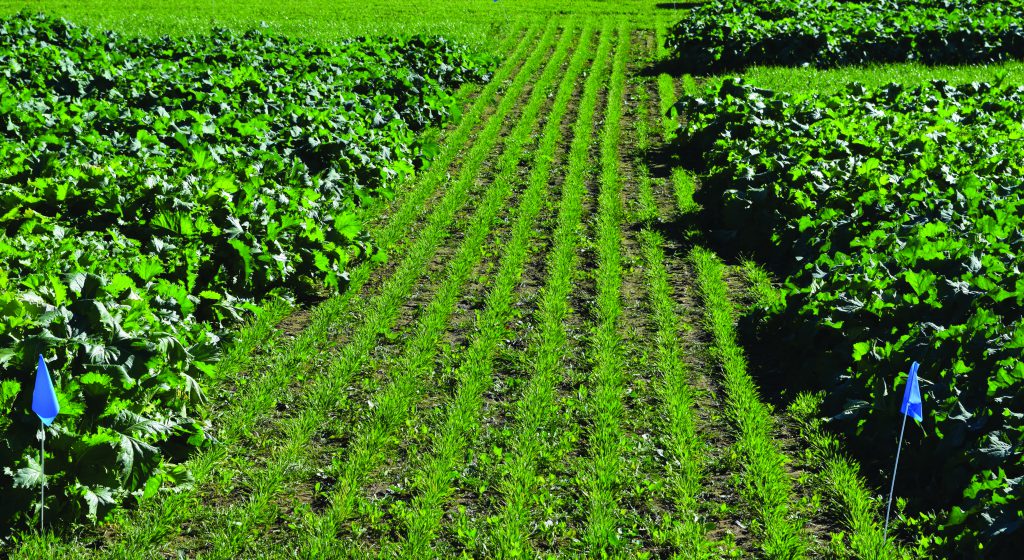
Reducing Greenhouse Gases
Like carbon dioxide and ozone, methane is a greenhouse gas that is tightly tied to both climate change and the cattle ranching industry, as cattle produce high levels of methane when digesting common pasture grasses. A major goal of sustainable beef livestock nutrition is identifying mixtures of feed that reduce methane emissions while still producing cattle with high body weights.
Dr Dillard has found that incorporating annual Brassica species, such as turnips, and summer crops, such as sorghum, into grazing crops provides beef cattle with higher nutritive value, while also reducing their methane emissions up to 30% by stimulating the efficiency of the cattle’s gut bacteria. Another benefit is that incorporating these plants is often less expensive than nutritional supplementation and provides a much greater biomass of forage for the herds. This work demonstrates that pasture management practices can reduce methane production while maintaining high quality grazing for a herd at a lower cost, allowing ranchers to decrease the impact of beef production on the environment while maintaining a profitable business.
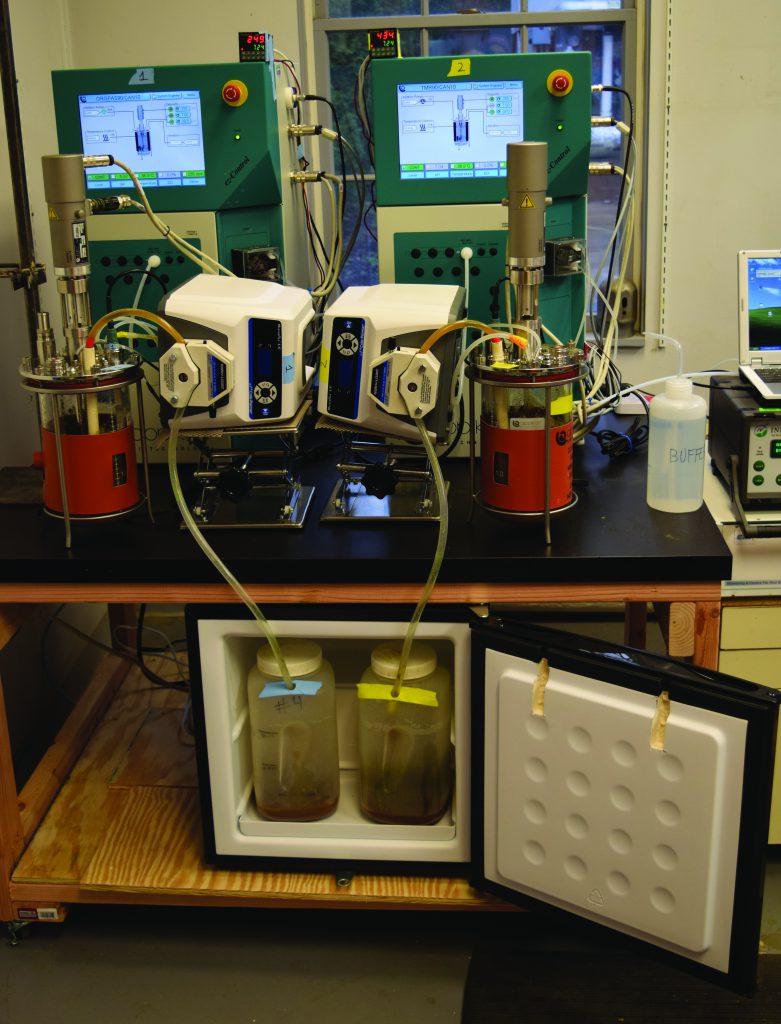 Maintaining Grassland Ecosystem Health
Maintaining Grassland Ecosystem Health
Another aspect of the team’s work is understanding how fertilisation efforts impact nutrient cycling in cattle fields. Animal wastes are high in phosphorus – a mineral that is often beneficial to plants and is a primary component of manure-based fertilisers. Often these fertilisers are applied at higher rates than growing plants will use, thus extra phosphorus is left in the soil. This problem is magnified in fields designated for cattle grazing, where urine and manure contribute phosphorus at a much higher rate than the typical grasses grown in the field will ever use. Dr Dillard and her colleagues wanted to understand how different land management practices could help prevent such high levels of the mineral from accumulating in soil in the first place, particularly by understanding how fertilisation with other nutrients impacts phosphorus levels in cattle fields.
Over three years, the group monitored phosphorus activity in cattle fields that were seeded with grasses and clover in spring, and cowpea in summer. Different fields were treated with nitrogen fertiliser at the recommended dose, half the recommended dose, and no nitrogen. The team found that fields fertilised with nitrogen at half the recommended treatment levels had the highest forage mass for cattle while also decreasing levels of phosphorus in the soil. Notably, increasing nitrogen to the full dose did not improve these results, suggesting that cattle farmers can use less fertiliser to provide their animals with lush forage, while also helping prevent excessive phosphorus levels that could end up in waterways later.
Nitrogen fertiliser represents the single greatest input cost of improved-pasture production for grazing by stocker cattle. There is an increasing need to boost forage supplies while simultaneously reducing inputs of nitrogen fertiliser. This is due to the finite supply of fossil fuel needed to manufacture fertiliser, the potential for an unstable supply chain, and our increasing global population.
The team is currently investigating biofertilisation with plant-growth-promoting rhizobacteria (PGPR) as an alternative to manufactured nitrogen fertiliser. In addition to enhancing pest resistance and drought tolerance, PGPR promote plant growth as a result of increased nutrient uptake from soil. Small-plot studies with select strains of rhizobacteria have revealed positive effects on forage nutritive quality and nitrogen-use efficiency, and the team plans to evaluate this on a larger scale to include hayed and grazed pasture.
Alternative Winter Systems for Cows and Calves
An important component of keeping cattle in seasonal climates is stockpiling forage for them to consume during the winter months when pastures are dormant, or grazing cool-season forages. Without a high-quality supply of grazeable forage, farmers must turn to expensive feed supplements to maintain the body condition of beef cattle through the winter.
Stockpiled forage serves as a sufficient replacement for hay if managed properly. Grazing stockpiled forage is an economical alternative to cutting and baling hay. Feeding lactating cows through the winter poses a major challenge, as their body condition must be maintained at low cost to ensure profits. To reduce overwintering costs while maintaining a productive and healthy herd, farmers need to be aware of which forage varieties and management practices will provide high yield, high nutrition forage for their cattle.
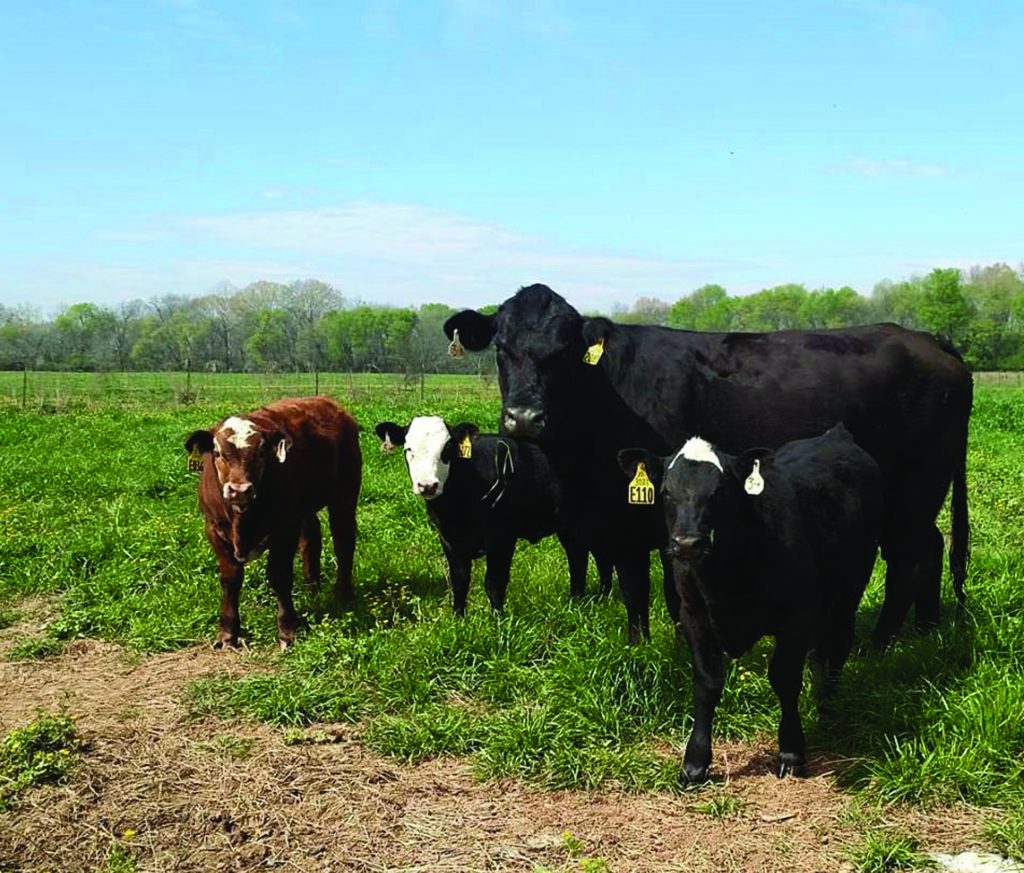
In the Southeast US, bermudagrass is a popular perennial grass for pastures. Hybrid varieties, bred with yield, nutritive value, and digestibility in mind, provide high quality forage for cattle during the warmer months, and are highly suitable to stockpiling for winter feeding. It is common practice for pregnant or lactating cows to be supplemented with hay or other feeds during the colder months. However, the amount of supplementation can be decreased by adding stockpiled forages.
Courteney Holland recently evaluated whether pasture management practices could help keep the quality of stockpiled bermudagrass high enough to support the nutritive needs of lactating cows without expensive supplementation. She found that cows fed stockpiled bermudagrass grown in fertilised fields maintained body weight better and had pregnancies and calves that were just as healthy as those fed nutritional supplements with standard hay. This also came at a lower cost compared to using supplements.
A similar study conducted by Dr Kim Mullenix with stockpiled bermudagrass supplemented with locally available by-product feeds for stocker calves suggested that this system may serve as a viable alternative to traditional conserved forage approaches for managing weaned calves during the fall forage production gap.
‘Using cool-season forages is an economically feasible practice that can be used by cow-calf producers to extend the grazing season in the winter months, and research efforts among our group have focused on optimum combinations of species for use in our climate,’ says Dr Mullenix. The team showed that cool-season annual grasses such as oats, rye, triticale, and ryegrass could successfully support high levels of gain and more than 100 grazing days per year for stocker cattle and cow-calf systems.
These results support the idea that targeted field management practices can help reduce farm costs while still maintaining a healthy herd. ‘Research in this area could have measurable impact on rebuilding cow herd numbers in the State of Alabama from its current historically low inventory,’ notes Holland and Dr Mullenix.
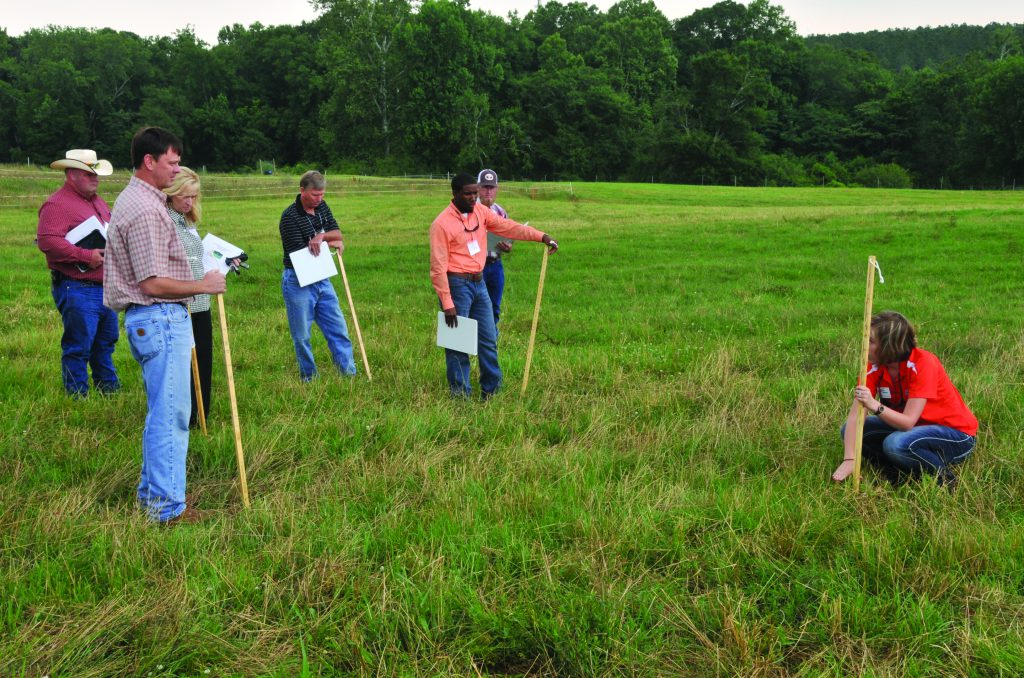
A Greener Future for Alabama Cattle
The team’s research is identifying practices that can make cattle farming in Alabama and the Southeast US more economical and sustainable, protecting land, animals and the economic interests of farmers.
Through their Extension programs, the group works directly with farmers to provide up-to-date beef cattle and forage management recommendations based on their research findings. A key component of their efforts is disseminating best practices to ranchers both locally and worldwide through novel delivery methods. The team is working to make this information actionable and accessible to farmers through the development of online decision tools related to land and nutritional management, hands-on educational programming for farmers, and interaction with state, federal, and local industry to disseminate information to the public. Providing outreach to farmers helps bring adoption to practical sustainable land and animal management practices, which is a key focus of the research team.
When describing the efforts of the team, Dr Muntifering states: ‘We stand shoulder-to shoulder as a genuinely integrated team of teaching, research and extension professional peers engaged in forage-based beef production systems… our achievements are a collective result of collaboration among our team.’
Meet the researchers

Dr Russell Muntifering
Dr Russell Muntifering was awarded his PhD in Agricultural Biochemistry & Nutrition from the University of Arizona in 1980. He worked as an Associate Professor at the University of Kentucky and Associate Director of the Montana Agricultural Experiment Station at Montana State University, prior to joining Auburn University as Associate Director of the Alabama Agricultural Experiment Station. Here, Dr Muntifering currently serves as a Full Professor in the Department of Animal Sciences. His research focuses on the productivity and nutritive quality of forages for agricultural livestock.
E: muntirb@auburn.edu
W: http://ansc.auburn.edu/muntifering/

Dr Leanne Dillard
Dr Leanne Dillard was awarded her PhD in Animal Science and Ruminant Nutrition at Auburn University in 2013. After graduation, she worked as a post-doctoral fellow in the Department of Crop and Soil Sciences at the University of Georgia, and also conducted post-doctoral research with the United States Department of Agriculture-Agricultural Research Service. In 2017, Dr Dillard joined the faculty at Auburn University, where she currently holds a split appointment as an Assistant Professor between the Departments of Animal Science and Crop, Soils, and Environmental Sciences. Her research and extension programs specialise in livestock pasture-based nutrition and forage crop production.
E: dillasa@auburn.edu
W: http://ansc.auburn.edu/leanne-dillard/

Dr Mary Kimberly Mullenix
Dr Kim Mullenix completed her BS and MS in Animal Science and Ruminant Nutrition at Auburn University, before earning a PhD in Agronomy from the University of Florida in 2013. In 2014, she returned to Auburn University as an Assistant Professor in Animal Sciences, where her research focuses on improving forage and nutritional management strategies among beef cattle operations, with the goals of optimising land use and improving economic returns. Through her Extension program, she develops educational programming for beef farmers on improved nutritional management concepts. Dr Mullenix is passionate about education and outreach, and has been awarded the Auburn University College of Agriculture/AAES Excellence in Extension and Outreach Award and the Alabama Beef Cattle Improvement Association Outstanding Extension Educator Award.
E: mullemk@auburn.edu
W: http://agriculture.auburn.edu/people/kim-mullenix-3/

Courteney McNamee Holland
Courteney Holland completed both her BS and MS in Animal Sciences at Auburn University, before joining the Mullenix lab as a PhD student in 2017. Her research has focused on the impacts of nitrogen fertilisation on stockpiled bermudagrass as winter forage for cattle and sustainable equine pasture systems. Through her Extension work, she develops science-based programs to address equine pasture health and equine management practices. For her research and outreach activities, Holland is a recent recipient of the Outstanding Graduate Student Award and the Meriweather Leadership Award at Auburn University.
FUNDING
Alabama Agricultural Experiment Station
Alabama Cooperative Extension System
Alabama Cattlemen’s Association
US Department of Agriculture


